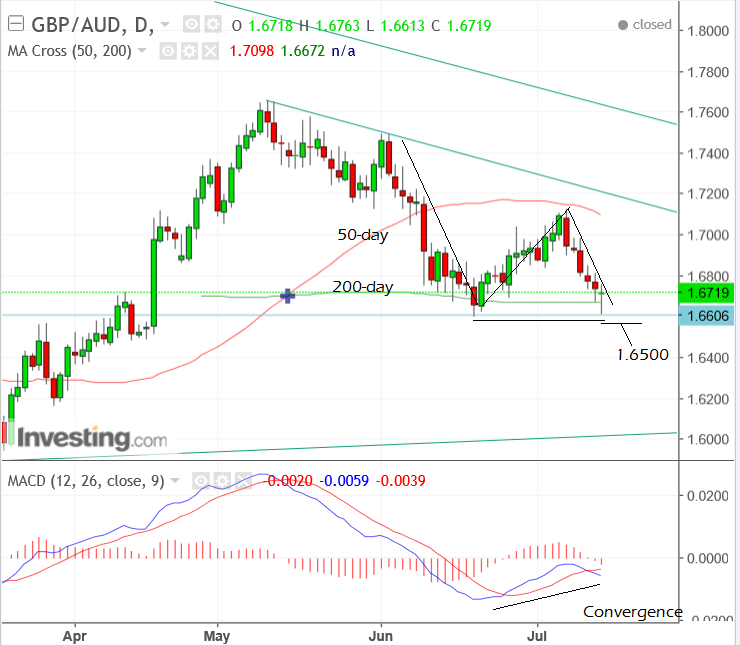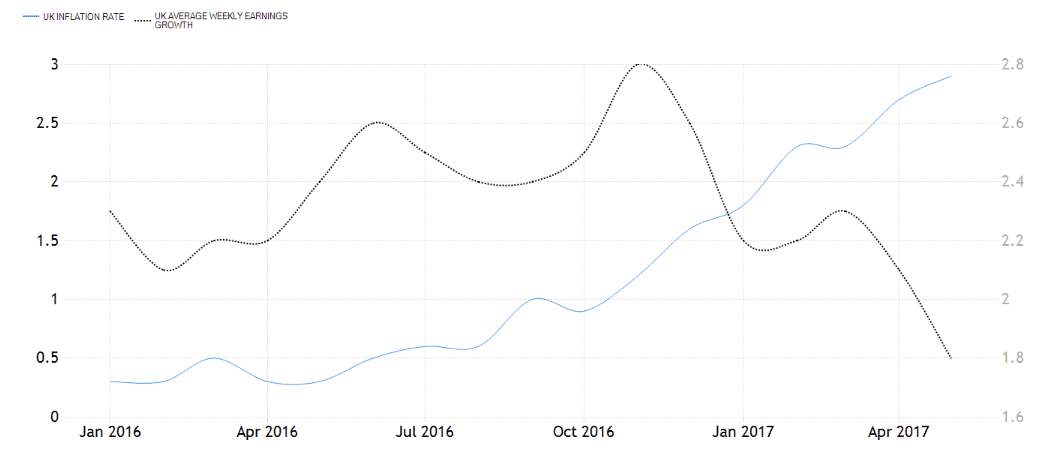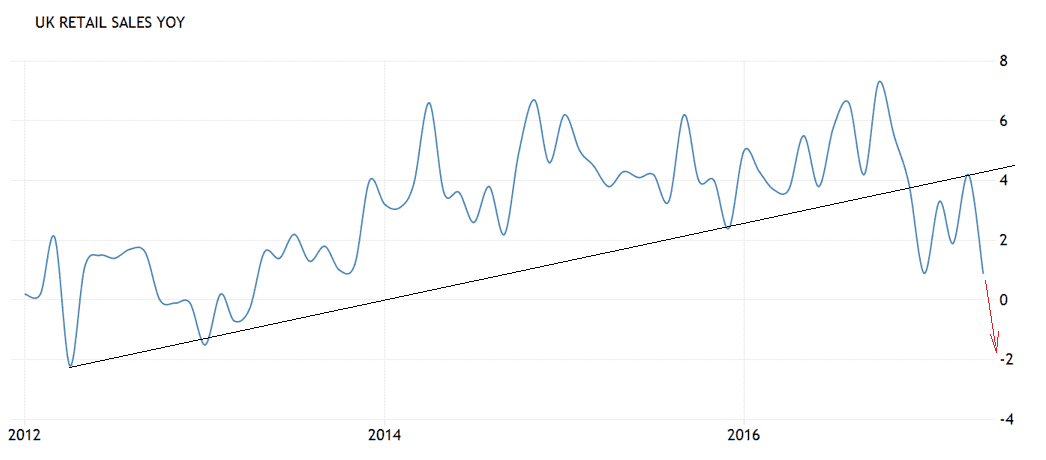GBP/AUD Rate: Forecast for the Coming Week

The Pound to Australian Dollar exchange rate is at risk of suffering further downside in the week ahead after falling steeply to the level of the 200-day moving average in the 1.66s, for the second time in as many months.
The steep decline to the same level it reached in June has revived a bearish outlook for the pair and the probability of a break below the 200-day MA leading to a continuation lower.
Confirmation of such a break would come from a move below the 1.6580 level, to an initial target at 1.6500.
Although the MACD is not corroborating the recent weakness in the exchange rate, which suggests the possibility of a rebound higher, such an outcome is not certain, and the pair may still decline despite the bullish convergence between MACD and price.

Data for the Australian Dollar
Employment data out on Thursday, July 20, is likely to be the main release of the week for the Aussie Dollar.
Unemployment has been steadily falling and although some of this has to do with a rise in part-time workers rather than full-time positions, Australian employment is still seen on balance as a strong point for the economy overall.
Analysts are actually expecting a rise in the Unemployment rate to 5.6% from 5.5% previously in June, and employment to show a 15k rise, when the Data is released in the early hours of Thursday morning, at 2.45 BST.
Get up to 5% more foreign exchange by using a specialist provider. Get closer to the real market rate and avoid the gaping spreads charged by your bank for international payments. Learn more here.
The other major release for the Australian Dollar is the minutes from the June rate meeting of the Reserve Bank of Australia (RBA).
The RBA adopted a neutral stance at their June meeting and due to the high degree of indebtedness amongst the population combined with concerns about a growing housing bubble, the RBA is unlikely to raise interests or lower them anytime soon.
The minutes will be read from the standpoint of a neutral expectation, with a hint either way potentially surprising.
Data for the Pound
The standout release for Sterling in the week ahead is June Inflation data which is out at 9.30 BST on Tuesday July 18.
The release is important because it impacts on the decision making of the Bank of England (BOE), which in turn is a major driver of the Pound.
Inflation has risen steeply after the Pound weakened following the referendum, which had the consequence of pushing up the prices of imports.
Inflation in May stood at 2.9% year-on-year (yoy: ie compared to May 2016), and 0.3% month-on-month (mom).
The consensus amongst analysts is that it will remain at 2.9% in June yoy but rise at a lesser 0.2% mom.
However, Canadian Investment Bank TD Securities think the market is being too dovish and forecast a higher 3.0% rise in inflation.
TD expect Core inflation to come out at 2.6% which is the same as the market.
A rise in the cost of utilities is likely to be the driving force behind higher broad inflation and stable core.
“Inflation is likely to have continued its march upward in June, in part due to utility price increases. Core inflation, meanwhile, is likely to have remained stable.”
Nor do TD see this as the “peak for inflation” as core could rise 1 or 2 basis points and headline could rise to the “min-3% range”, which would, “head up the debate about a (single) rate hike later this year.
Incidentally the divergence between slowing average earnings in the UK and rising inflation is probably the root cause of the slowdown in the high street or “consumption” as economists like to call it.
The drag on growth from people spending less money is likely to keep the hawks at the BOE in check and limit any possibility of a rate hike.
We know Carney for one won’t change his view until the “trade-off” facing the MPC “continues to lessen” by which he means the trade-off between slowing growth and rising inflation.

Which brings us on to the other major release of the week for Sterling – Retail Sales on Thursday, July 20 at 9.30.
The market is currently being very optimistic about the gains expected in June.
They see headline Sales rising 2.6% yoy – which is a big jump from the previous 0.9% print; and Core increasing 2.4% from May’s very much lower 0.6% rise.
The market also expects a monthly rise of 0.4% for headline and 0.5% for core from -1.2% and -1.6% respectively in May.
This turnaround appears hugely optimistic from both our and TD Securities perspective, and seems to have little logic backing it up.
TD are of the opinion that Sales will not rise by anything (0.0%) mom in June rather than the 0.4% suggested by the market – we agree.
The picture below showing historical Retail Sales data shows a breakdown in the prior up-trend which gives the outlook a definite bearish hue.
The look and feel of the chart betokens a more negative print next Thursday than a more positive, which would also make more sense given the fall in real earnings.
BK Asset Management’s Kathy Lien, however, thinks there is a chance of a better-than-expected print:
“The smaller decline in shop pricesand the uptick in BRC retail sales monitor points to stronger numbers that should help rather than hurt the GBP/USD rally,”
Whilst this fits with the bullish technical outlook we, nevertheless, retain a negative bias.





